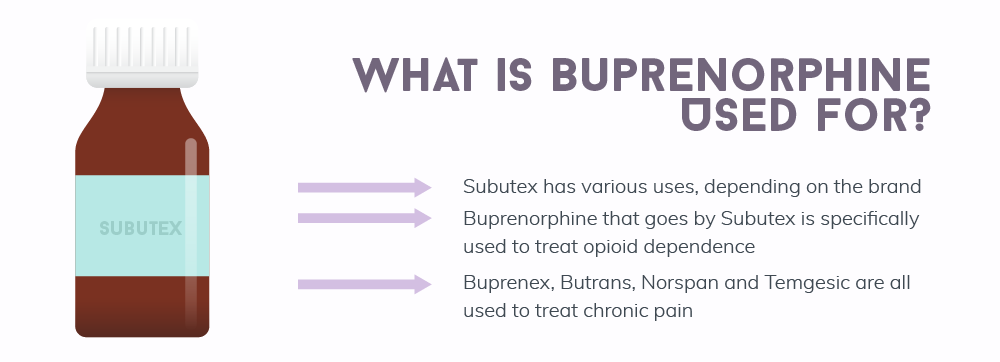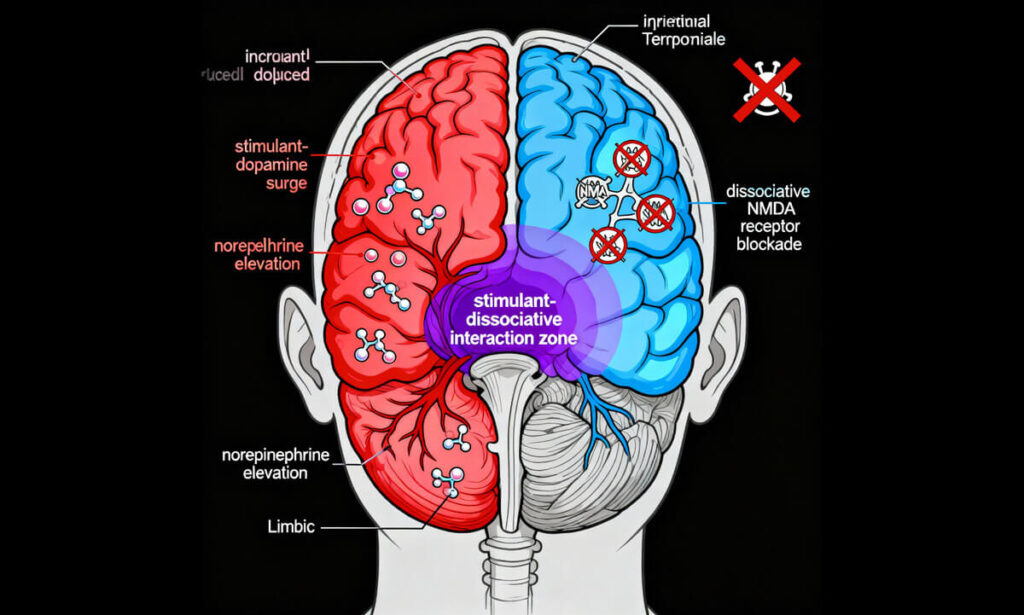
Welcome to the Waismann Method, your trusted source for accurate information on overcoming Subutex dependence. While Subutex is prescribed to manage opioid addiction, it can also lead to physical dependence for some individuals. Our educational platform provides clear, science-based insights into Subutex rapid detox, exploring how medical protocols have evolved to offer safer, faster, and more effective opioid detoxification. With nearly three decades of experience behind the Waismann name, this resource helps individuals and professionals make informed decisions about treatment options and long-term wellness.
What is Subutex (Buprenorphine)?
Subutex, also known as Buprenorphine, is a prescription medication frequently used in the treatment of opioid addiction. It is classified as a partial opioid agonist, which means it binds to the same brain receptors as opioids but with less intensity. Subutex serves as a harm reduction strategy, helping individuals manage their opioid dependence rather than achieving immediate abstinence.
Key points about Subutex (Buprenorphine) include:
- Opioid Dependence Management: Subutex is often prescribed as part of Medication-Assisted Treatment (MAT) for opioid addiction. It aims to reduce cravings and alleviate withdrawal symptoms, making it easier for individuals to manage their opioid addiction.
- Partial Agonist: As a partial agonist, Subutex activates opioid receptors but to a lesser degree than full agonists like heroin or prescription opioids. This allows it to mitigate the effects of other opioids while reducing the risk of misuse.
- Opioid Nature: It’s essential to recognize that Subutex is itself an opioid. Rather than facilitating complete opioid abstinence, its primary function is to provide a safer and more controlled alternative for those grappling with opioid dependence.
- Safety Profile: Subutex presents a lower risk of respiratory depression and overdose compared to stronger opioids, enhancing the safety of individuals in recovery.
- Naloxone Combination: Some medications combine Buprenorphine with Naloxone, such as Suboxone. Naloxone acts as an opioid antagonist, discouraging misuse and diversion by precipitating withdrawal if the medication is misused intravenously.
- Prescription Requirement: Subutex is available only by prescription and should be used under the guidance of a healthcare provider experienced in addiction treatment.
It is crucial to adhere to the prescribed usage of Subutex under the supervision of a healthcare professional. Subutex serves as a valuable element in the journey toward managing opioid dependence and reducing harm within the context of comprehensive addiction treatment.
“Whether buprenorphine is taken as prescribed or abused, people may experience severe withdrawal symptoms if they suddenly stop taking it.”
Brand Names of Medications Containing Buprenorphine:
Buprenorphine is available in various formulations and brand names, depending on the specific product. Some common brand names of medications containing Buprenorphine include:
- Subutex: This brand typically contains Buprenorphine alone and is often used for the initiation of opioid addiction treatment.
- Suboxone: Suboxone is a combination medication that contains both Buprenorphine and Naloxone. Naloxone is included to deter misuse, as it can precipitate withdrawal if the medication is injected.
- Zubsolv: Zubsolv is another combination medication that contains Buprenorphine and Naloxone. It is used for the treatment of opioid dependence.
- Bunavail: Bunavail is a buccal film formulation of Buprenorphine and Naloxone, designed to be placed inside the cheek for absorption.
- Belbuca: Belbuca is a buccal film that contains Buprenorphine. It is primarily used for the management of chronic pain.
- Butrans: Butrans is a transdermal patch that releases Buprenorphine slowly over the course of a week. It is primarily used for chronic pain management.
Please note that the availability of these brand names and formulations may vary by country, and they are prescribed for different purposes, including the treatment of opioid addiction and chronic pain management. The choice of medication and brand name depends on the specific needs and circumstances of the patient. Always consult with a healthcare provider for appropriate guidance and prescription.
Subutex Detox and Withdrawal: What You Need to Know
Subutex detox refers to the process of eliminating buprenorphine, a partial opioid agonist from the body. While Subutex is commonly used to treat opioid use disorder, long-term use can lead to physical dependence. When someone decides to stop taking the medication, withdrawal symptoms can emerge as the body adjusts to functioning without it.
Common Subutex Withdrawal Symptoms
Withdrawal from Subutex can vary in intensity and duration depending on factors such as the length of use, dosage, and individual physiology. Below are some of the most frequently reported Subutex withdrawal symptoms:
-
Nausea and Vomiting – Gastrointestinal upset is a typical response during early withdrawal.
-
Muscle and Joint Pain – Generalized aches and discomfort, especially in the muscles and joints.
-
Anxiety and Restlessness – Many experience heightened anxiety, irritability, and a sense of unease.
-
Insomnia – Sleep disturbances are common and may persist for several days.
-
Runny Nose and Watery Eyes – Flu-like symptoms such as nasal congestion are often present.
-
Sweating and Chills – Intense sweating may occur, sometimes alternating with cold sensations.
-
Dilated Pupils and Goosebumps – Pupil dilation and piloerection (“goosebumps”) are hallmark signs.
-
Abdominal Cramps and Diarrhea – Digestive issues can be distressing during detox.
-
Emotional Distress – Mood swings, irritability, and depression are common psychological symptoms.
While Subutex withdrawal tends to be milder than withdrawal from full opioid agonists like heroin or oxycodone, it can still be physically and emotionally challenging.
How Long Does Subutex Withdrawal Last?
The Subutex withdrawal timeline typically begins within 24 to 72 hours after the last dose. Symptoms usually peak between days 2 and 4 and gradually subside over one to two weeks. However, some individuals may experience lingering symptoms such as fatigue, insomnia, or mood fluctuations—especially if detox is not medically supported.
Discontinuing Subutex (Buprenorphine): A Step Toward Opioid Independence
Choosing to discontinue Subutex (buprenorphine) is a significant milestone for those seeking to move beyond opioid dependence. While Subutex has helped many individuals stabilize during treatment, long-term use can result in continued physical reliance. Understanding the potential benefits of Subutex discontinuation—when done under proper medical guidance—can empower individuals to pursue a healthier, opioid-free future.
1. Regaining Autonomy and Daily Freedom
When you stop taking Subutex, you begin to reclaim independence from daily dosing routines and medication schedules. This freedom allows for greater flexibility and control over your lifestyle, free from the structure of maintenance therapy.
2. Emotional Clarity and Stability
Opioids, including buprenorphine, may dull emotional responsiveness over time. Discontinuing Subutex can lead to improved emotional awareness and a stronger connection to your feelings, relationships, and sense of self.
3. Financial Relief from Maintenance Medication
Long-term Subutex use may involve ongoing pharmacy costs, doctor visits, and treatment-related expenses. Ending dependence on the medication can ease this financial burden, giving you the opportunity to redirect resources toward long-term wellness and personal goals.
4. Improvement in Physical Health
Although Subutex is considered safer than full opioid agonists, it is not without side effects. Discontinuing use may improve physical well-being, especially for those experiencing issues such as constipation, fatigue, or hormonal imbalance linked to long-term buprenorphine use.
5. Freedom from Opioid Dependence
It’s important to remember that Subutex is still an opioid. Detoxing from Subutex means eliminating your reliance on any opioid-based substance—an essential step in breaking the cycle of dependence.
6. A Sense of Empowerment
Electing to undergo Subutex detox is an empowering decision. It reflects strength, readiness, and the desire to live without reliance on opioid medications. This self-directed step often boosts self-confidence and personal accountability.
7. Renewed Engagement with Life
Long-term opioid maintenance therapy can lead to emotional numbness or detachment. Discontinuing Subutex allows many individuals to re-engage with meaningful relationships, passions, and responsibilities that may have taken a backseat during active treatment.
8. The Opportunity for a Drug-Free Future
For those who wish to live completely free of substances, stopping Subutex represents a meaningful transition. With the right support, it’s possible to move toward lasting recovery, physical and emotional stability, and a life unburdened by daily opioid use.
Planning a Safe Subutex Detox
It is crucial to approach Subutex discontinuation under the supervision of experienced medical professionals. Sudden withdrawal without support may lead to discomfort, relapse risk, or health complications. Medically assisted Subutex detox, including protocols such as rapid detox under sedation, can significantly reduce the severity of Subutex withdrawal symptoms and enhance long-term success.








